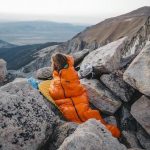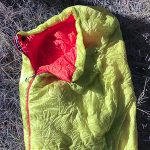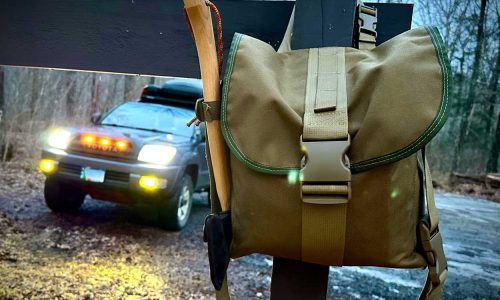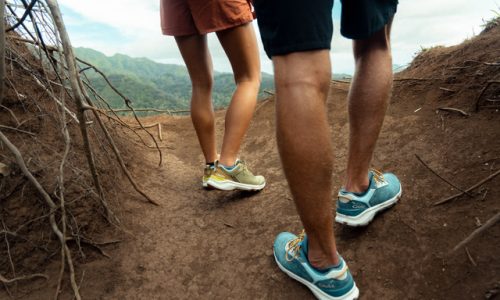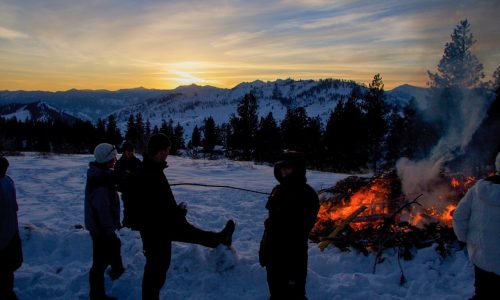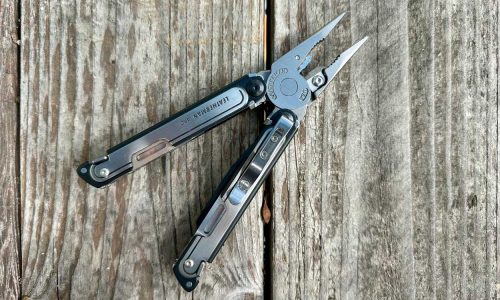Home » Gear Reviews » Hiking & Camping » Sleeping Bags » Summer Sleeping Bags (30F+) » Therm-a-Rest Space Cowboy
Therm-a-Rest Space Cowboy Review
December 12, 2018

















 82
82 The Good
- Lightweight
- Can attach to sleeping pad if needed
- Withstands wet weather
- Durable
- Inexpensive
The Bad
- Does not come with a compression sack
- Poor insulation/warmth
- Not very cozy
Therm-a-Rest advertises the Space Cowboy as a fast-and-light summer sleeping bag. Of the products included in this test, it is the smallest and the lightest, but also the least warm. It is rated for the highest temperature of any of the summer bags we tested, so we recommend it for hot low-elevation camping only.
Weight
At 1 lb 3 oz, the Therm-a-Rest Space Cowboy is the lightest weight bag in our summer sleeping bag test. For a category known for shedding unneeded weight, this is quite an accolade. However, the Space Cowboy is designed for far warmer weather than most of the other bags we tried—most others were rated for 30-degree weather— so the weight is slightly misleading. It is a lightweight bag, especially for one with synthetic insulation, so for missions where weight is a primary concern and wet weather is a possibility, this is a reasonable option.
Compressibility
The Space Cowboy is the smallest bag before being compressed, and once stuffed into its included packing sack, it has one of the smallest packed sizes in our test. Unfortunately, the bag comes with a storage sack and a stuff sack, but not a compression sack. If packed into a sack with compression straps, it could get even smaller. Our favorite way to pack this bag was to smush it into our pack around all of our other gear as the mortar in the “brick and mortar” packing strategy. Since it is thin, light, and durable, it works well packed in this method.
Ventilation
The only ventilation feature in this bag is the side zipper, which can be undone three-quarters of the way to let in fresh air. This will be helpful on hot, humid nights because the reflective lining in the top of the bag is not very breathable. To prevent a sweat-fest, an open side might be required.
Warmth
This bag is surprisingly thin. Our initial reaction was that it was barely a sleeping bag at all. Unlike all the plush and fluffy bags loaded with down feathers, the Space Cowboy is insulated with eraLoft, a synthetic fill constructed from hollow fibers, which Therm-a-Rest claims keeps the weight low without sacrificing the warmth. The plus side of this insulation is that it is water resistant, and will maintain its insulating power even when wet, unlike down. The downside is that this material is made from petroleum, and comes with a California Proposition 65 warning that this product could expose users to toluene, a chemical known to have harmful side effects. Toluene is particularly bad when inhaled. It is typically used as a solvent, in fuel, and in glue but it is also used in the construction of polyurethane foam. In this product, we are unsure if the toluene is an ingredient in an adhesive or was used to make the insulation, but we are not very concerned. These days we are surrounded by man-made products on a daily basis, and we don’t believe that using this sleeping bag will be harmful. However, if this bothers anyone, there are plenty of naturally-filled down alternatives on the market.
For being thin, this bag does provide a decent amount of warmth. It achieves this in two ways. First, the insulation is thoughtfully applied. 65% of it is on the top of the bag where a sleeper needs it most and 35-percent is at the bottom of the bag where it is most often crushed underneath a person’s body. This saves weight by not requiring the camper to carry any more insulation than necessary. Second, the top of the bag is lined with Thermacapture, a reflective lining that reflects body heat back towards the person inside the bag. This makes the bag less breathable than a down filled bag, which allows moisture to move through the feathers.
The Space Cowboy is rated for 45ºF, which is the highest temperature of any of the bags in our test. However, at a closer glance, we noticed that 45ºF is the bag’s limit, according to the EN rating. The comfort rating is 52ºF. This is slightly deceiving because other bags are most often advertised at their comfort rating, not their limit rating. For example, the Sierra Designs Cloud is advertised as a 35-degree bag, and it earned an EN comfort rating of 36ºF and a limit rating of 26ºF – which is significantly colder. People tend to purchase bags based on their planned comfort temperature, so calling this a 45-degree bag when it is not comfortable until a balmy 52 is very misleading.
We slept in this bag on hot nights at low elevations in southern California and found it to be excellent in those warm conditions. We tried it on a cooler night at approximately 6,000 feet elevation and ended up pulling a second sleeping bag over top to make it through the night. While this bag is excellent for hot weather camping, we would not plan to use this thin bag in weather much cooler than 50 degrees.
Features
As a fast-and-light model, the features on the Space Cowboy are minimal. It has a three-quarter length two-way side zipper, a hood with a cinch, a snap to keep the neck closed, and a very small draft collar. There are no stash pockets or extra flourishes. Therm-a-Rest’s SynergyLink connectors proved a popular feature. These are stretchy straps that hook into loops on the side of the bag and can be wrapped around a sleeping pad to provide a secure sleep system. This prevents the sleeper from rolling or sliding of the pad during the night. Overall, our testers felt that this feature was unnecessary. Most of them reported no problems with rolling off of their pads and they lacked the desire to deal with the finicky connector straps before bed. So for those sleepers, the connectors are easy to dispense with. For those who do have problems with slipping off of their sleeping pad, the connectors will make this bag easier and more comfortable to use.
Durability
Since this bag is filled with synthetic insulation, it will have a shorter life than a quality down bag, simply because man-made insulation can’t handle as many compressions and expansions. However, the day-to-day durability of this piece is extremely high. A large gaping hole could be torn in the face fabric and the insulation would not leak out. Additionally, it could get soaked and maintain its insulating ability. The thin and small size of this bag combined with its durability led us to the conclusion that this is a workhorse of a bag. Scrunch it into your backpack or your panniers alongside all your other equipment with no concern about rips or even the weather that you will encounter.











